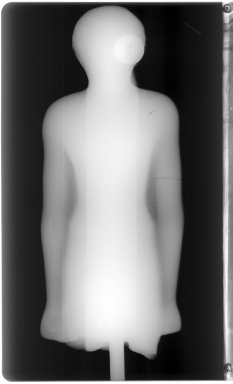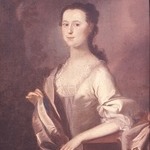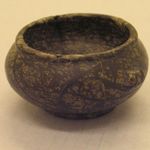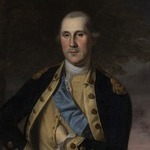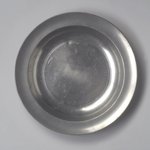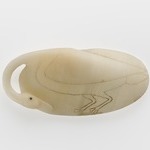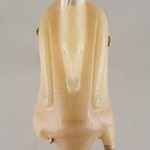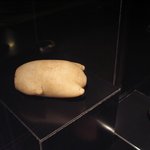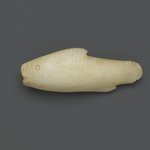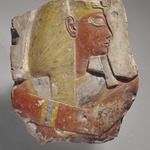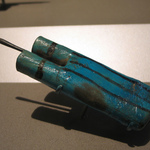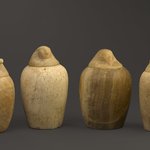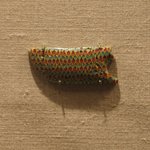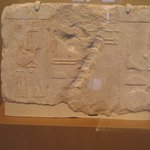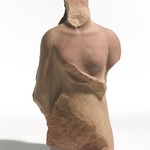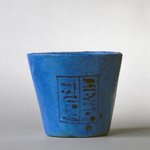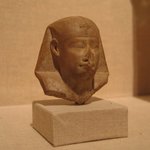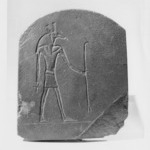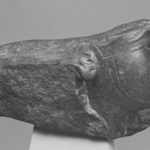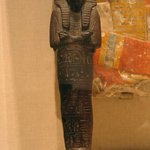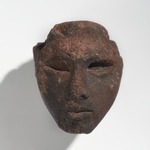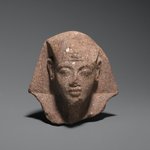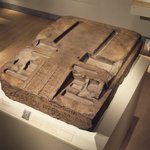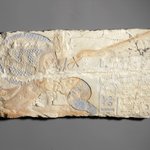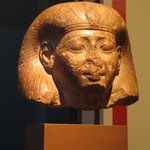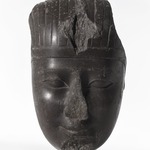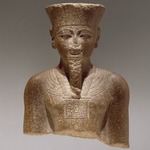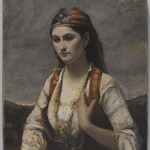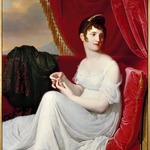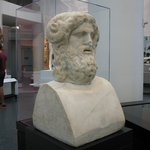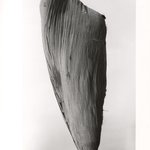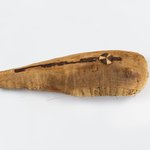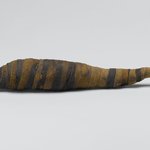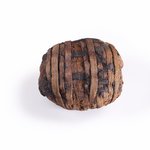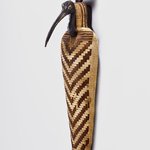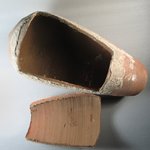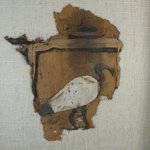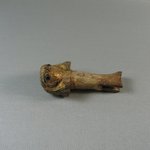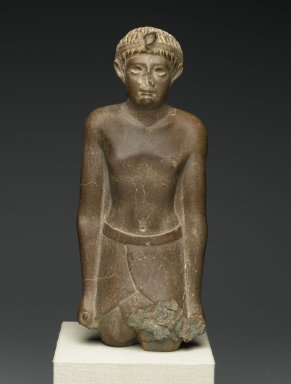

Ptolemaic Prince, 51–30 B.C.E. Quartzite, 12 1/2 x 5 5/16 x 3 3/8 in. (31.8 x 13.5 x 8.5 cm). Brooklyn Museum, Charles Edwin Wilbour Fund, 54.117. Creative Commons-BY (Photo: Brooklyn Museum, 54.117_front_PS2.jpg)

Ptolemaic Prince, 51–30 B.C.E. Quartzite, 12 1/2 x 5 5/16 x 3 3/8 in. (31.8 x 13.5 x 8.5 cm). Brooklyn Museum, Charles Edwin Wilbour Fund, 54.117. Creative Commons-BY (Photo: Brooklyn Museum, 54.117_bw.jpg)

Ptolemaic Prince, 51–30 B.C.E. Quartzite, 12 1/2 x 5 5/16 x 3 3/8 in. (31.8 x 13.5 x 8.5 cm). Brooklyn Museum, Charles Edwin Wilbour Fund, 54.117. Creative Commons-BY (Photo: Brooklyn Museum, CUR.54.117_wwg8.jpg)
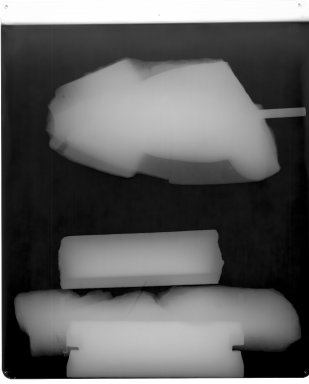
Ptolemaic Prince, 51–30 B.C.E. Quartzite, 12 1/2 x 5 5/16 x 3 3/8 in. (31.8 x 13.5 x 8.5 cm). Brooklyn Museum, Charles Edwin Wilbour Fund, 54.117. Creative Commons-BY (Photo: Brooklyn Museum, CONS.54.117_1983_xrs_detail01.jpg)
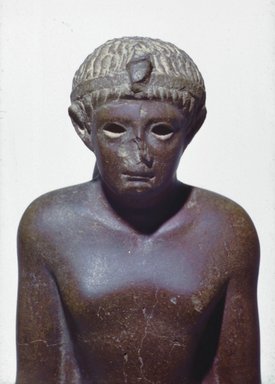
Ptolemaic Prince, 51–30 B.C.E. Quartzite, 12 1/2 x 5 5/16 x 3 3/8 in. (31.8 x 13.5 x 8.5 cm). Brooklyn Museum, Charles Edwin Wilbour Fund, 54.117. Creative Commons-BY (Photo: Brooklyn Museum, CUR.54.117.jpg)
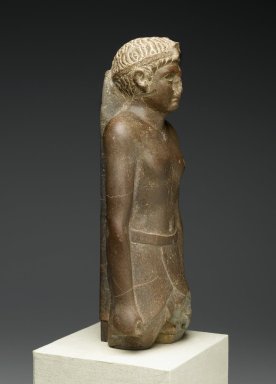
Ptolemaic Prince, 51–30 B.C.E. Quartzite, 12 1/2 x 5 5/16 x 3 3/8 in. (31.8 x 13.5 x 8.5 cm). Brooklyn Museum, Charles Edwin Wilbour Fund, 54.117. Creative Commons-BY (Photo: Brooklyn Museum, 54.117_threequarter_right_PS2.jpg)

Ptolemaic Prince, 51–30 B.C.E. Quartzite, 12 1/2 x 5 5/16 x 3 3/8 in. (31.8 x 13.5 x 8.5 cm). Brooklyn Museum, Charles Edwin Wilbour Fund, 54.117. Creative Commons-BY (Photo: Brooklyn Museum, 54.117_profile_left_PS2.jpg)
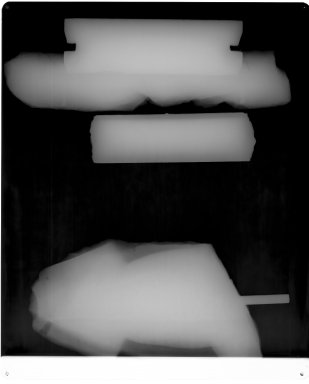
Ptolemaic Prince, 51–30 B.C.E. Quartzite, 12 1/2 x 5 5/16 x 3 3/8 in. (31.8 x 13.5 x 8.5 cm). Brooklyn Museum, Charles Edwin Wilbour Fund, 54.117. Creative Commons-BY (Photo: Brooklyn Museum, CONS.54.117_1983_xrs_detail08.jpg)
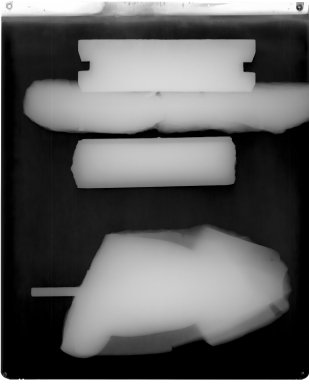
Ptolemaic Prince, 51–30 B.C.E. Quartzite, 12 1/2 x 5 5/16 x 3 3/8 in. (31.8 x 13.5 x 8.5 cm). Brooklyn Museum, Charles Edwin Wilbour Fund, 54.117. Creative Commons-BY (Photo: Brooklyn Museum, CONS.54.117_1983_xrs_detail07.jpg)
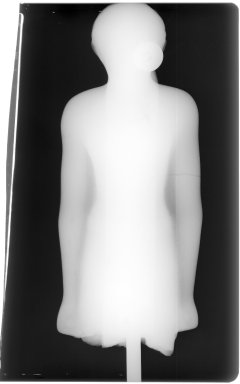
Ptolemaic Prince, 51–30 B.C.E. Quartzite, 12 1/2 x 5 5/16 x 3 3/8 in. (31.8 x 13.5 x 8.5 cm). Brooklyn Museum, Charles Edwin Wilbour Fund, 54.117. Creative Commons-BY (Photo: Brooklyn Museum, CONS.54.117_1983_xrs_detail03.jpg)
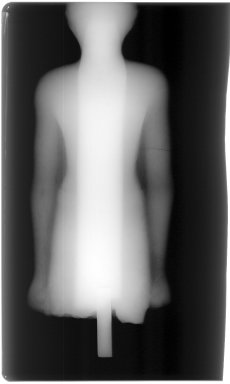
Ptolemaic Prince, 51–30 B.C.E. Quartzite, 12 1/2 x 5 5/16 x 3 3/8 in. (31.8 x 13.5 x 8.5 cm). Brooklyn Museum, Charles Edwin Wilbour Fund, 54.117. Creative Commons-BY (Photo: Brooklyn Museum, CONS.54.117_1983_xrs_detail02.jpg)
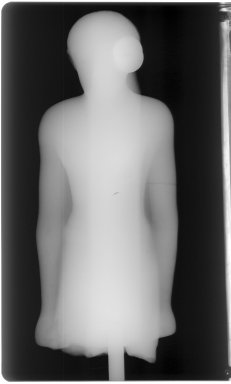
Ptolemaic Prince, 51–30 B.C.E. Quartzite, 12 1/2 x 5 5/16 x 3 3/8 in. (31.8 x 13.5 x 8.5 cm). Brooklyn Museum, Charles Edwin Wilbour Fund, 54.117. Creative Commons-BY (Photo: Brooklyn Museum, CONS.54.117_1983_xrs_detail05.jpg)
Ptolemaic Prince
Egyptian, Classical, Ancient Near Eastern Art
On View: 19th Dynasty to Roman Period, Martha A. and Robert S. Rubin Gallery, 3rd Floor


